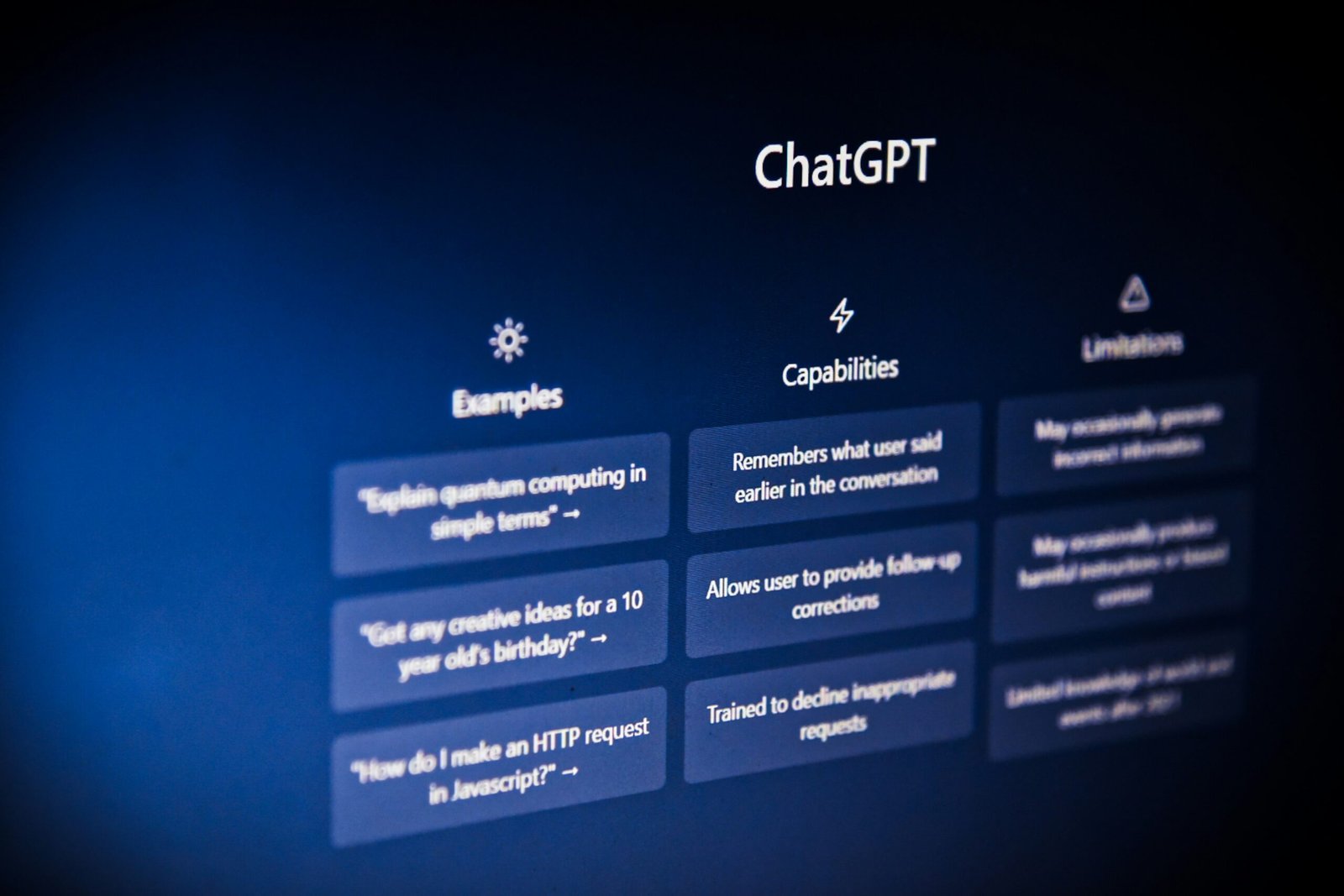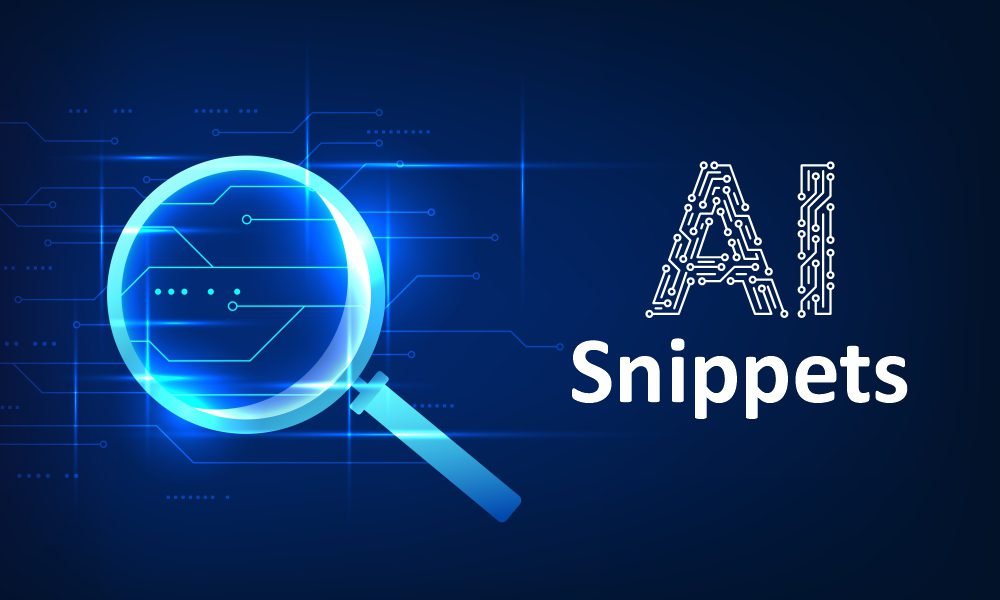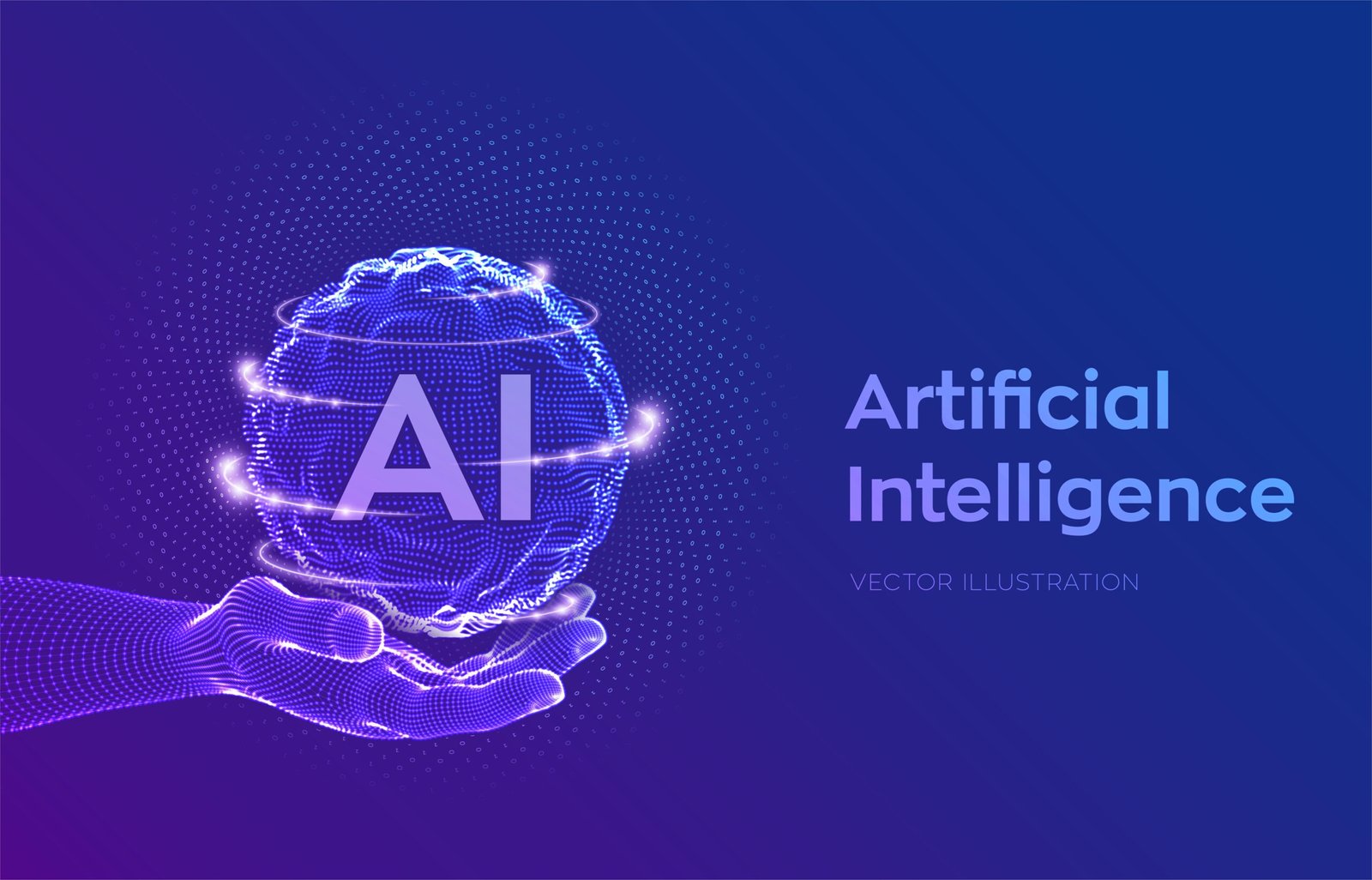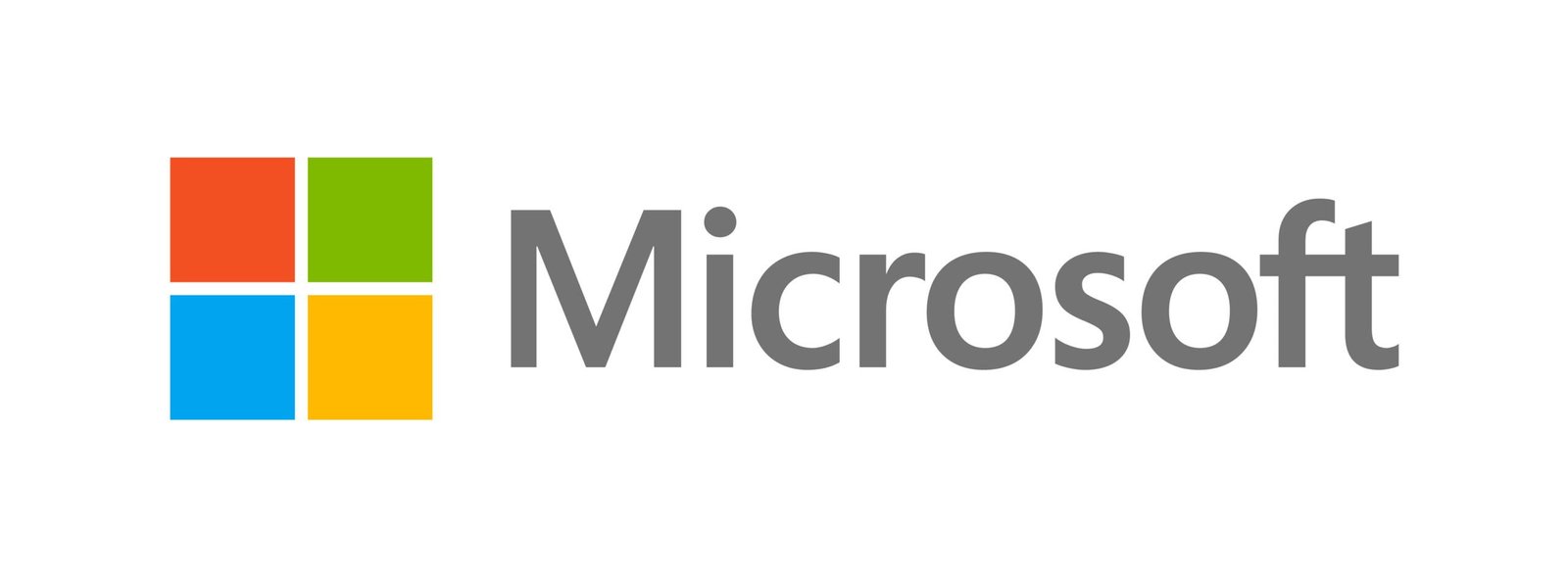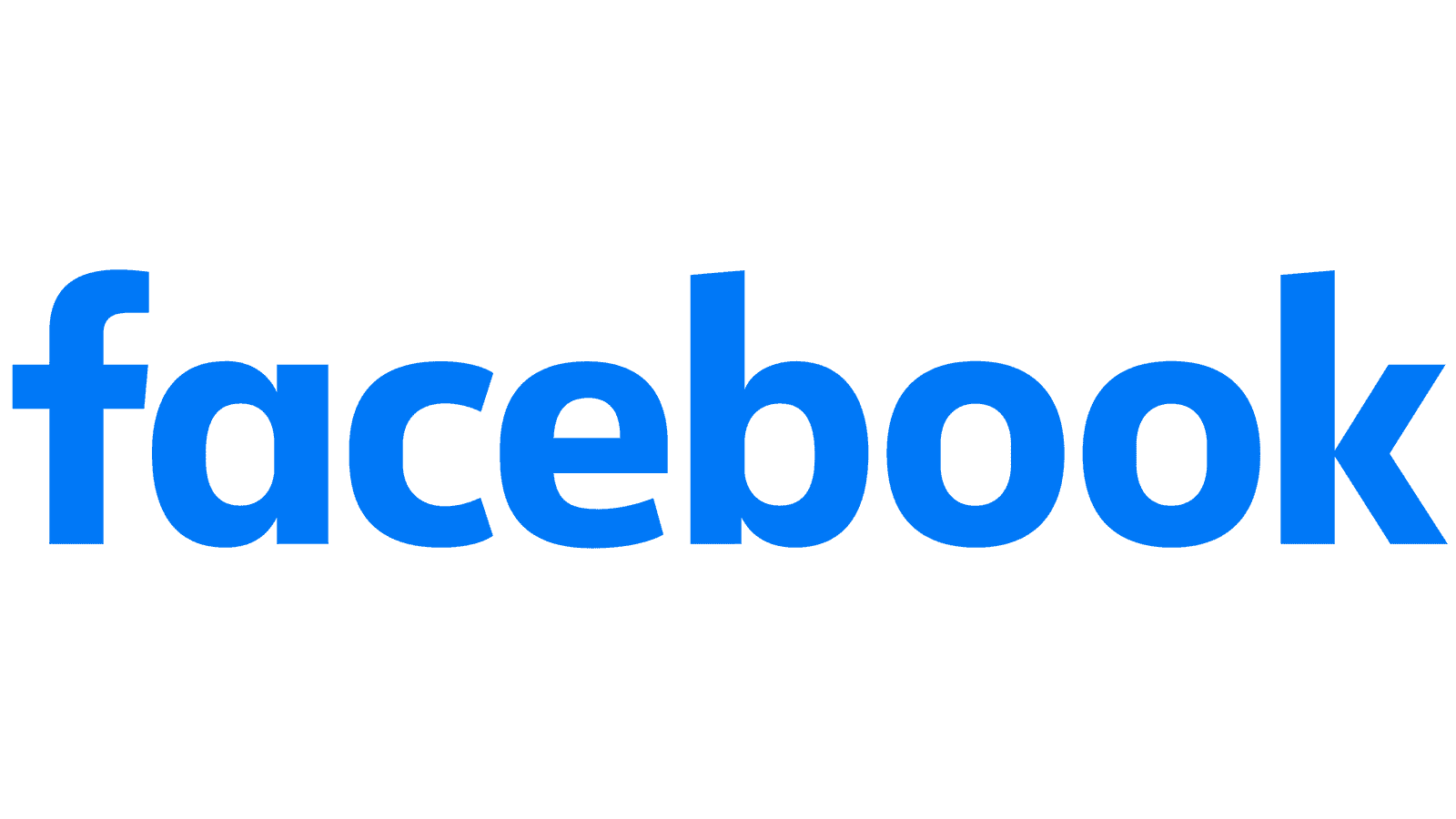LLMO: The Ultimate Guide to Dominating AI-Powered Search Results in 2025
Industry: Artificial Intelligence

Have you noticed something strange happening to your website traffic lately? Your content still ranks well in Google. Your SEO fundamentals are solid. Yet traffic continues declining month after month, and you can’t figure out why.
You’re not alone, and you’re not imagining it.
The culprit isn’t your SEO strategy. It’s the fundamental shift in how people find information. Today’s users increasingly bypass traditional search results entirely, getting instant answers from AI platforms like ChatGPT, Perplexity, Claude, and Google’s AI Overviews. They ask questions and receive comprehensive responses without ever clicking a single link.
This isn’t a temporary trend. It’s the new reality of search, and brands that fail to adapt risk becoming invisible in conversations happening right now about their industry, their competitors, and their expertise.
At WEBSIGH, we call the solution Large Language Model Optimisation (LLMO)—the next evolution of search visibility designed specifically for the AI-driven era. And here’s the best part: most companies haven’t started optimizing for it yet, which means early movers gain a massive competitive advantage.
What Exactly Is LLMO (Large Language Model Optimization)?
LLMO is the practice of optimizing your brand’s visibility within AI-generated responses from large language models like ChatGPT, Perplexity, Google Gemini, Claude, and similar platforms. Think of it as SEO’s smarter, more sophisticated evolution, designed for a world where answers matter more than links.
Here’s the crucial distinction:
Traditional SEO focuses on ranking your content on search engine results pages (SERPs), hoping users click through to your website.
LLMO focuses on getting your brand cited, mentioned, and recommended directly inside the AI-generated answers users actually read, even when they never visit your site.
The difference is profound. Traditional search results present options. AI responses present conclusions. When an AI model recommends your brand or cites your content, you’re not competing for attention; you are the answer.
LLMO vs. LLM SEO: Understanding the Distinction
You might encounter the term “LLM SEO” in your research. While related, it’s narrower in scope. LLM SEO typically focuses on optimising for AI Overviews within Google’s traditional search interface, essentially adapting existing SEO tactics for AI-enhanced SERPs.
LLMO takes a broader, more strategic approach. It focuses on:
- Structuring content for AI comprehension across all platforms
- Building authority that AI models recognise and trust
- Ensuring visibility in standalone AI tools, not just Google’s ecosystem
- Establishing citation-worthiness regardless of which AI platform users choose
The goal extends beyond ranking. It’s about becoming the authoritative source that AI models consistently reference when answering questions in your domain.
How Large Language Models Actually Work (And Why It Matters for Your Marketing)
Understanding LLM mechanics is essential for effective optimisation. Unlike traditional search engines that crawl and index the web in real-time, most large language models generate responses based on patterns learned from massive training datasets.
Here’s the process simplified:
- Training Phase: LLMs absorb billions of words from diverse sources—websites, books, academic papers, Wikipedia, Reddit discussions, news articles, and more.
- Pattern Recognition: The models learn relationships between concepts, phrases, and information, understanding which sources typically provide reliable information on specific topics.
- Response Generation: When you submit a prompt, the LLM predicts the most statistically likely next word based on everything it learned during training, building complete responses word by word.
- Citation Logic: Modern LLMs prioritise content that demonstrates clarity, authority, factual accuracy, and proper structure, the same qualities human experts value.
What This Means for Your Marketing Strategy
LLMs favour content that meets specific criteria:
✓ Clear and comprehensible – No jargon-heavy, convoluted explanations
✓ Well-structured and organised – Logical hierarchy with proper formatting
✓ Fact-based and verifiable – Claims supported by data and credible sources
✓ Published on trusted platforms – Established domains with authority signals
If your content checks these boxes and exists in places LLMs train on, you dramatically increase your chances of inclusion in AI responses. The objective shifts from merely ranking to becoming recognised as a reliable component of the internet’s knowledge infrastructure.
Bottom line: If your content lacks clarity, structure, or credibility signals, LLMs will overlook you entirely, regardless of how good your traditional SEO metrics look.
The Seismic Impact of AI on Information Discovery
Large language models have fundamentally transformed how billions of people discover information daily. Rather than scrolling through ten blue links and clicking multiple blog posts, users now ask natural language questions and receive comprehensive, synthesised answers instantly, without leaving the AI interface.
The statistics paint a stark picture:
- ChatGPT: Over 700 million weekly active users globally
- Perplexity AI: 22 million active users as of May 2025
- AI Overviews: Appearing in over 15% of Google searches
This acceleration of “zero-click” behaviour means users find answers without visiting your website. Even when you’re technically the best solution provider in your industry, if you’re not part of the AI-generated answer, prospects may never discover you exist. Or worse, forget you entirely.
The New Rules of Digital Visibility
The competitive landscape has fundamentally shifted. Visibility now depends almost entirely on whether AI models recognize and trust your content. Failing to optimize for this reality means accepting invisibility while competitors who adapt early establish dominant positions that become increasingly difficult to challenge.
The opportunity: Because most companies haven’t started LLMO yet, early adopters gain disproportionate visibility advantages that compound over time as AI platforms reinforce existing citation patterns.
Why LLMO Is Non-Negotiable for Modern Marketing
Suppose you’ve relied exclusively on traditional SEO. In that case, you’ve likely noticed concerning signals: traffic declining despite stable rankings, reduced engagement even with increased content production, and leads drying up despite strong domain authority.
The problem isn’t your SEO execution. It’s that users are finding answers elsewhere, and your brand isn’t part of those conversations.
The Risks of Ignoring LLMO
Competitive Displacement: While you optimise for last decade’s search behaviour, forward-thinking competitors are establishing themselves as the AI-cited authorities in your space. Every day you delay allows competitors to strengthen their position.
Diminishing Returns: Your existing content investments deliver decreasing value as traffic patterns shift toward AI-powered discovery. The ROI on traditional content marketing continues to erode.
Authority Erosion: AI models increasingly favour sources they’ve already cited. Absence from initial citation patterns makes future inclusion progressively more difficult, creating a self-reinforcing cycle of invisibility.
Lost Market Share: When AI tools recommend competitors for queries you should own, you lose not just traffic but mind share, consideration, and ultimately revenue.
The Advantage of Early Adoption
Conversely, marketers who embrace LLMO today position themselves for sustained competitive advantages:
- First-mover visibility in AI responses before markets become saturated
- Compounding citation patterns as AI models reinforce successful sources
- Authority positioning that becomes increasingly difficult for competitors to challenge
- Future-proof strategy aligned with how search behaviour continues evolving
LLMO isn’t optional anymore—it’s the baseline requirement for maintaining relevance in AI-first search reality.


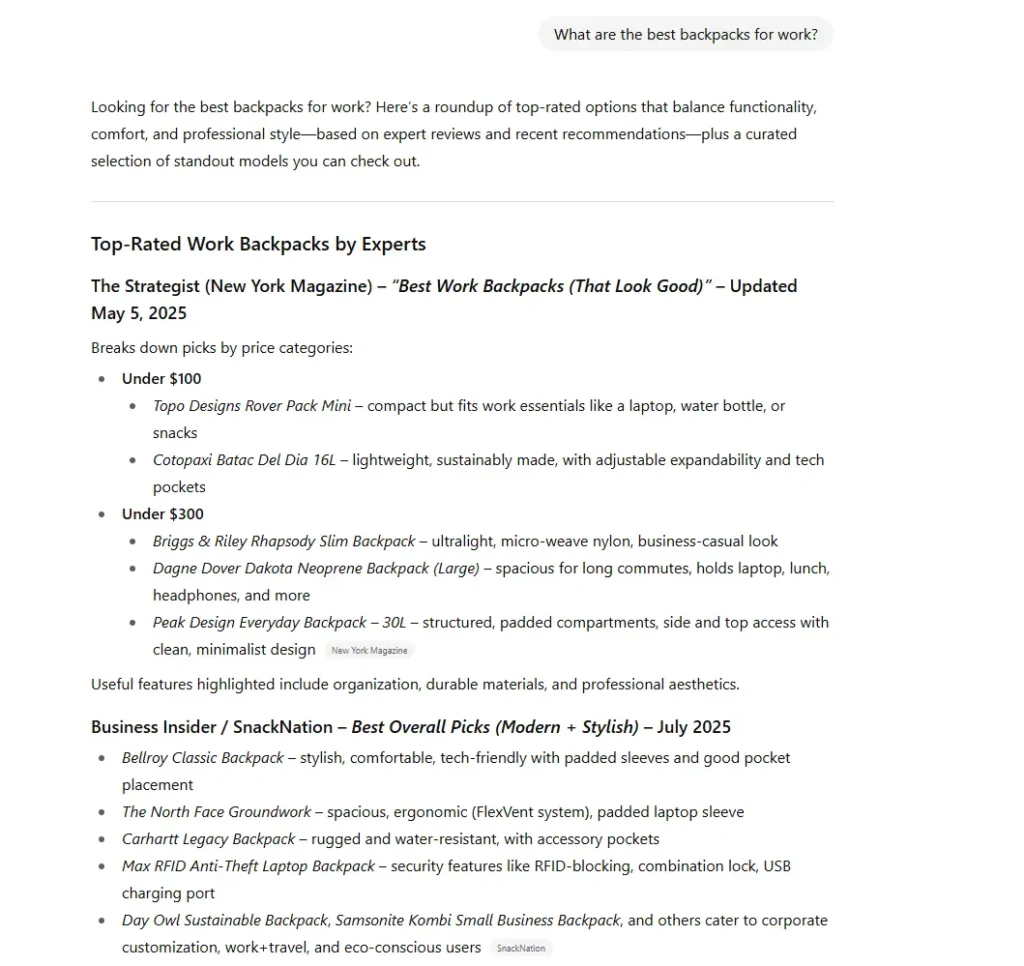

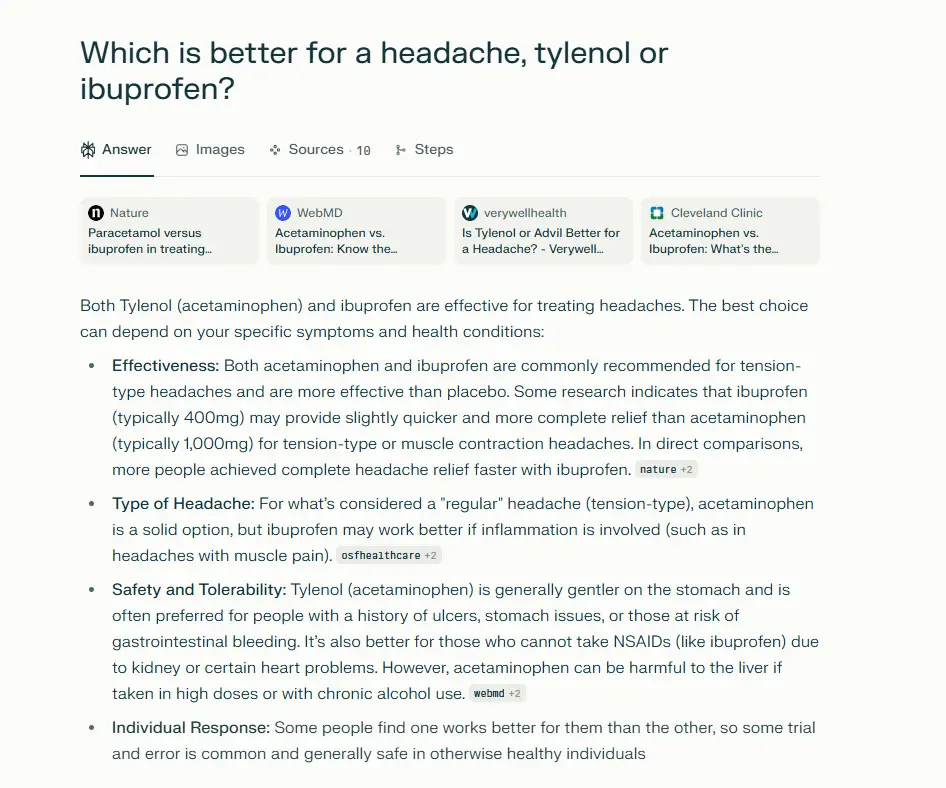
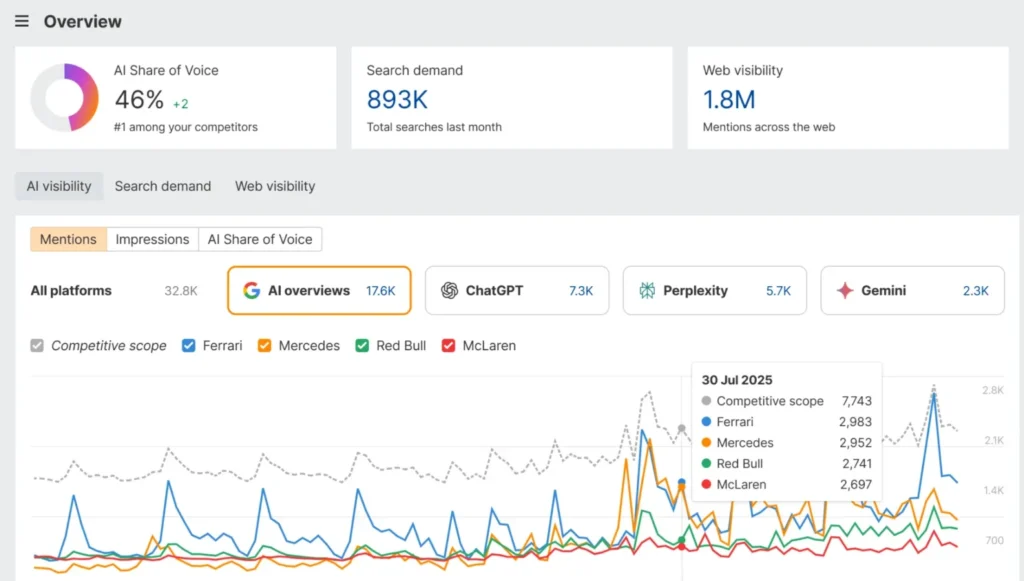
WEBSIGH's Comprehensive LLMO Strategy Framework
At WEBSIGH, we’ve developed a systematic approach to LLMO based on analysing thousands of AI citations across industries. Our framework rests on three fundamental pillars that work synergistically to maximise your brand’s AI visibility.
Pillar 1: Create Content That AI Models Trust and Cite
AI models prioritise reliable, comprehensive content created by demonstrable experts. This concept directly parallels Google’s E-E-A-T framework (Experience, Expertise, Authoritativeness, Trustworthiness), but AI platforms apply these criteria even more rigorously.
Practical Implementation Strategies:
Demonstrate Real Experience: Share first-hand insights, case study results, and proprietary methodologies that only someone with genuine experience could provide. Generic advice gets ignored; specific, experience-based guidance gets cited.
Establish Clear Expertise: Include author credentials, professional backgrounds, and relevant qualifications. AI models recognise and value credentialed experts, especially in YMYL (Your Money, Your Life) topics.
Build Verifiable Authority: Support every significant claim with recent statistics, peer-reviewed research, or reputable source citations. The more proof points you provide, the more confidently AI models reference your content.
Cultivate Trust Signals: Maintain factual accuracy, acknowledge limitations or uncertainties, and update content regularly to reflect current information. AI models penalise outdated or incorrect information severely.
Example in Practice: A medical publisher employing licensed doctors to write content, citing peer-reviewed studies, and maintaining strict fact-checking protocols will consistently outperform generic health blogs in AI citations, even if traditional SEO metrics are comparable.
Pillar 2: Structure Content for AI Comprehension
AI models excel at parsing structured information. Implementing proper schema markup and logical content organisation dramatically increases your chances of citation and accurate representation in AI responses.
Essential Schema Implementations:
FAQ Schema: Structure common questions and concise answers in FAQ schema format. This directly feeds AI models the question-answer pairs they need for user queries.
HowTo Schema: Present step-by-step processes with clear instructions, tools needed, and expected outcomes. AI platforms heavily favour properly marked instructional content.
Article Schema: Mark up blog posts and thought leadership pieces with proper article schema, including headline, author, publish date, and article body structure.
Product Schema: Include detailed product information, pricing, availability, and review aggregates for e-commerce and SaaS offerings.
Organisation & Person Schema: Establish clear entity relationships so AI models understand your brand identity, leadership, and organisational structure.
Implementation Made Simple: Modern SEO plugins like Rank Math and Yoast simplify schema implementation with user-friendly interfaces, often requiring just checkbox selections rather than manual coding.
The payoff is substantial: Schema markup acts as a roadmap for AI systems, explicitly telling them what your content contains and why it matters, dramatically increasing citation probability.
Pillar 3: Optimise for Natural, Conversational Queries
Traditional search engines reward keyword optimisation. AI models excel at understanding and responding to natural, human-style questions. Your content must bridge this gap by targeting long-tail, conversational queries that match how real people ask questions.
Conversion Strategy Steps:
Mine Question-Based Keywords: Analyse “People Also Ask” boxes, Reddit threads, Quora discussions, and industry forums. Document the exact phrasing people use when seeking answers.
Transform Headings: Replace keyword-stuffed headings with natural questions. Instead of “LLMO Strategy,” use “How Do I Optimise My Brand for Large Language Models?”
Expand FAQ Sections: Create comprehensive FAQ sections addressing every common question in your audience’s natural language, not the sanitised versions you wish they’d ask.
Target Conversational Long-Tail: Focus on complete question phrases like “How do I make my brand visible to AI search tools?” rather than sterile keyword strings like “AI brand optimisation.”
This approach aligns your content with how AI models naturally process and respond to queries, dramatically increasing the likelihood that your content surfaces in relevant responses.
Advanced LLMO Tactics for Maximum AI Visibility
Isolated articles no longer establish sufficient authority. Both AI models and search engines recognise brands demonstrating expertise across entire subject areas through interconnected content ecosystems.
Topic Cluster Architecture:
- Pillar Content: Create comprehensive, authoritative guides on broad topics (e.g., “Complete Guide to LLMO”)
- Cluster Content: Develop detailed sub-topic articles addressing specific aspects (schema implementation, E-E-A-T optimisation, citation tracking, conversational queries)
- Strategic Internal Linking: Connect cluster content back to pillars and cross-link related pieces, creating an interconnected web of authority
- Progressive Depth: Start with foundational concepts and progressively address more advanced, nuanced aspects
This structure signals to AI models that your brand owns the entire topic, not just fragments, substantially increasing citation probability across related queries.
Earn High-Authority Backlinks and Brand Mentions
AI models trust what the trusted internet trusts. High-quality backlinks from credible sources remain crucial for LLMO success, perhaps even more so than traditional SEO, since AI training data heavily weights authoritative source relationships.
Strategic Link Building for LLMO:
Digital PR Campaigns: Pitch newsworthy stories, proprietary research findings, or expert commentary to journalists at tier-one publications and industry-specific authoritative sites.
Original Research Publication: Conduct and publish original studies, surveys, or data analysis that others naturally cite when discussing your industry.
Expert Contribution Programs: Share expertise through bylined articles, podcast interviews, and expert roundups on established platforms in your niche.
Strategic Partnership Content: Collaborate with complementary brands on co-created resources that earn natural backlinks from both audiences.
Regular Backlink Audits: Monitor your backlink profile continuously, disavowing low-quality or spammy links that could undermine AI trust signals.
The more respected websites reference your brand and content, the more likely AI models include you in their training understanding and subsequent responses.
Implement Multi-Format Content
AI models value clarity and accessibility. Content formatted for easy scanning, comprehension, and summarisation dramatically increases your citation probability. Importantly, many tactics that improve human readability also optimise AI parseability.
Format Optimisation Tactics:
Structured Lists: Use bullet points and numbered sequences for processes, features, benefits, or key takeaways.
Data Tables: Organise comparisons, specifications, or multi-variable information in clean, properly marked table formats.
Visual Integration: Include annotated screenshots, infographics, diagrams, and charts with descriptive alt text that AI models can interpret.
Clear Hierarchy: Maintain consistent heading structure (H1→H2→H3) that logically organises information flow.
Summary Sections: Provide concise summaries or key takeaways that AI models can easily extract and reference.
Multimedia Transcripts: Include full transcripts for video and audio content, making verbal information accessible to AI processing.
These elements give AI models multiple “hooks” for understanding and citing your content, rather than forcing them to parse dense, unstructured paragraphs.
Expand Beyond Google: Multi-Platform AI Visibility
AI visibility extends far beyond Google’s ecosystem. Modern LLMs train on diverse sources, including social platforms, specialised forums, and niche communities. Strategic multi-platform presence multiplies your citation opportunities.
Platform-Specific Optimisation:
Reddit: Engage authentically in relevant subreddits (10K+ members). Provide detailed, helpful responses (150+ words) that demonstrate expertise without overt self-promotion.
YouTube: Optimise videos with detailed descriptions, timestamp chapters, keyword-rich titles, and uploaded transcript files to maximise both YouTube and AI discoverability.
LinkedIn: Publish thought leadership articles, engage in industry discussions, and share original insights that position your brand as knowledgeable and current.
Industry Forums: Participate meaningfully in specialised forums and communities where your target audience seeks expertise and solutions.
Podcast Appearances: Guest appearances on industry podcasts create audio content that increasingly feeds AI training data.
Each platform presence creates additional pathways for AI models to discover, understand, and cite your expertise.
Measuring LLMO Success: Essential Tracking and Metrics
LLMO requires different measurement approaches than traditional SEO. While rankings and organic traffic remain relevant, AI visibility demands new metrics that capture your presence in AI-generated responses.
Critical LLMO Metrics to Track
1. Branded Mentions in AI Responses
Monitor how frequently your brand name or content appears in outputs from ChatGPT, Perplexity, Google Gemini, Claude, and other major AI platforms. Track both direct citations and indirect references where your content informs responses without explicit attribution.
Manual Method: Regularly query AI platforms with industry-relevant questions and document when your brand appears.
Automated Tools: Platforms like Semrush AI Tracking, Ahrefs Brand Radar, and specialized tools like Profound provide automated monitoring and reporting.
2. Topic-Level AI Inclusion
Search AI models for key industry queries where you should have expertise. If competitors consistently appear in responses while you don’t, that’s a critical visibility gap requiring immediate attention.
3. AI Referral Traffic Analysis
Configure Google Analytics 4 to specifically track referral traffic from AI-powered platforms. Some platforms (like Perplexity) now drive direct referral traffic when users click through from AI responses.
Setup tip: Create custom Looker Studio templates that separate AI referrals from general referral traffic for clearer performance insights.
4. Share of Voice in AI Responses
Calculate your brand’s proportional presence in AI responses compared to competitors for critical industry queries. This metric reveals relative competitive positioning in AI visibility.
5. Citation Quality and Context
Beyond counting mentions, evaluate how AI models reference your brand. Are you cited as a primary authority or a secondary source? Is the context positive and accurate?
Recommended LLMO Tracking Cadence
- Weekly: Manual spot-checks of critical queries in major AI platforms
- Bi-weekly: AI referral traffic analysis and trend identification
- Monthly: Comprehensive share of voice assessment and competitive analysis
- Quarterly: Strategic review comparing LLMO metrics to traditional SEO performance
This data reveals which strategies deliver results and guides resource allocation toward the highest-impact LLMO tactics.
LLMO Tools and Technology Stack
While LLMO remains relatively new, several tools have emerged to help track and optimise AI visibility:
Semrush AI Search Tracking: Monitor brand presence across AI Overviews and major LLM platforms with comprehensive reporting dashboards.
Ahrefs Brand Radar: Track brand mentions across AI search tools with impression data and competitive intelligence.
WEBSIGH’s Proprietary LLMO Dashboard: Custom-built monitoring combining multiple data sources for holistic AI visibility tracking (available to clients).
Google Search Console: While primarily for traditional search, GSC data on impressions and positions provides baseline visibility metrics.
Perplexity Analytics (emerging): The platform is developing analytics features for content creators and brands.
The LLMO tool landscape continues to rapidly evolve. WEBSIGH maintains current relationships with emerging platforms to provide clients access to cutting-edge monitoring capabilities as they become available.
Common LLMO Mistakes to Avoid
Based on WEBSIGH’s experience implementing LLMO across diverse industries, several common pitfalls consistently undermine success:
❌ Keyword Stuffing for AI: AI models recognise and penalise unnatural keyword repetition more effectively than traditional search algorithms.
❌ Neglecting E-E-A-T Signals: Generic content without clear authorship, credentials, or verifiable expertise gets systematically ignored by AI platforms.
❌ Ignoring Schema Implementation: Failing to implement structured data dramatically reduces your visibility in AI responses, regardless of content quality.
❌ Single-Platform Focus: Optimising exclusively for Google while ignoring standalone AI platforms leaves massive visibility opportunities untapped.
❌ Inconsistent Tracking: Sporadic monitoring prevents identifying what works, leaving you unable to optimise effectively or prove ROI.
❌ Short-Term Thinking: Expecting immediate results leads to premature strategy abandonment. LLMO requires sustained commitment for compounding returns.
The Future of LLMO: What's Coming Next
LLMO will continue evolving rapidly as AI capabilities advance and user behaviours shift. Staying ahead requires understanding emerging trends:
Multimodal AI Integration: Future LLMs will increasingly process and generate images, video, and audio alongside text, requiring optimisation across all content formats.
Real-Time Training Updates: Some AI platforms are moving toward more frequent training updates, reducing the lag between content publication and AI awareness.
Personalised AI Responses: As AI models incorporate user history and preferences, LLMO strategies will need to account for personalisation factors.
Voice-First AI Optimisation: Growing adoption of voice-based AI assistants requires content optimisation for spoken queries and audio responses.
AI-Native Content Formats: New content types designed specifically for AI consumption will emerge, potentially including structured knowledge graphs and semantic data formats.
The brands that establish LLMO foundations today will be best positioned to capitalise on these emerging opportunities while competitors scramble to catch up.
Take Control of Your AI Visibility Today
The AI search revolution is here, and it’s accelerating. Every day you delay LLMO implementation, competitors establish stronger authority positions that become progressively harder to challenge.
But here’s the encouraging reality: most companies still haven’t recognised this shift, let alone adapted to it. That means right now, today, you have an unprecedented opportunity to claim visibility in AI responses before your market becomes saturated with competitors fighting for the same space.
LLMO isn’t about abandoning traditional SEO. It’s about evolving your strategy to maintain relevance as search behaviour fundamentally transforms. The brands that master both traditional and AI-driven search visibility will dominate their industries for years to come.
Ready to Become the Authority AI Cites?
At WEBSIGH, we’ve helped hundreds of brands establish dominant positions in AI-powered search results through our proven LLMO framework. We don’t just implement tactics, we build comprehensive strategies that position your brand as the authoritative source AI models consistently reference.
Our LLMO Services Include:
✓ Comprehensive AI visibility audit across all major platforms
✓ E-E-A-T optimisation and authority building strategies
✓ Schema implementation and technical structure enhancement
✓ Topic cluster architecture and content strategy development
✓ Multi-platform optimisation across AI search ecosystems
✓ Ongoing monitoring, reporting, and strategy refinement
Start Your LLMO Journey Today:
📧 Email: info@websigh.com
📞 Phone: +91 (700) 880-7871
🔗 Schedule Your Free LLMO Audit: Kindly find the form below to reach out.
Don’t let competitors claim the authority positions that should belong to your brand. The AI search future is here; let’s ensure you’re not just participating, but dominating.
About Abhisek & WEBSIGH
Abhisek founded WEBSIGH to help brands navigate the rapidly evolving digital marketing landscape with strategies that work today and adapt for tomorrow. With expertise spanning traditional SEO, AI optimization, and emerging search technologies, WEBSIGH partners with forward-thinking companies ready to dominate in the AI-driven future of search.
FAQs
What is LLMO?
LLMO stands for large language model optimisation. It’s the practice of making your brand, content, and data more visible in AI-generated answers like ChatGPT, Claude, Gemini, and Perplexity.
How is LLMO different from SEO?
SEO helps you rank in traditional search engines. LLMO ensures you’re included in AI responses. Both are important, but LLMO addresses the “zero-click” future of search.
How do I get my brand into LLM responses?
Focus on three pillars: authoritative content (E-E-A-T), structured data (schema, FAQs, HowTos, Product), and monitoring AI citations. Add digital PR, backlinks, and multi-format content to increase the chances your expertise is recognised and surfaced.
How long does LLM optimisation take?
Like SEO, results don’t happen overnight. But unlike SEO, you can sometimes see brand mentions in LLMs faster, especially if your content is well-cited and already trusted.
What tools track AI visibility?
Early options include Semrush AI Tracking, Ubersuggest LLM Beta, and Ahrefs Brand Radar. You can also use GA4 to measure referral traffic from LLM-powered search engines like ChatGPT.
Do backlinks still matter for LLMO?
Yes. LLMs lean on credible, widely cited sources. High-authority backlinks increase your chances of being trusted and surfaced in AI answers.
Can small businesses benefit from LLMO?
Absolutely. In fact, moving early is an advantage. If competitors aren’t optimising yet, you can claim visibility before they catch up.
The technology that we use to support you
Ready to reduce your technology cost?
See More Blogs
Partner with Us for Comprehensive IT
Call us at: 700-880-7871
- Client-oriented
- Independent
- Competent
- Results-driven
- Problem-solving
- Transparent



